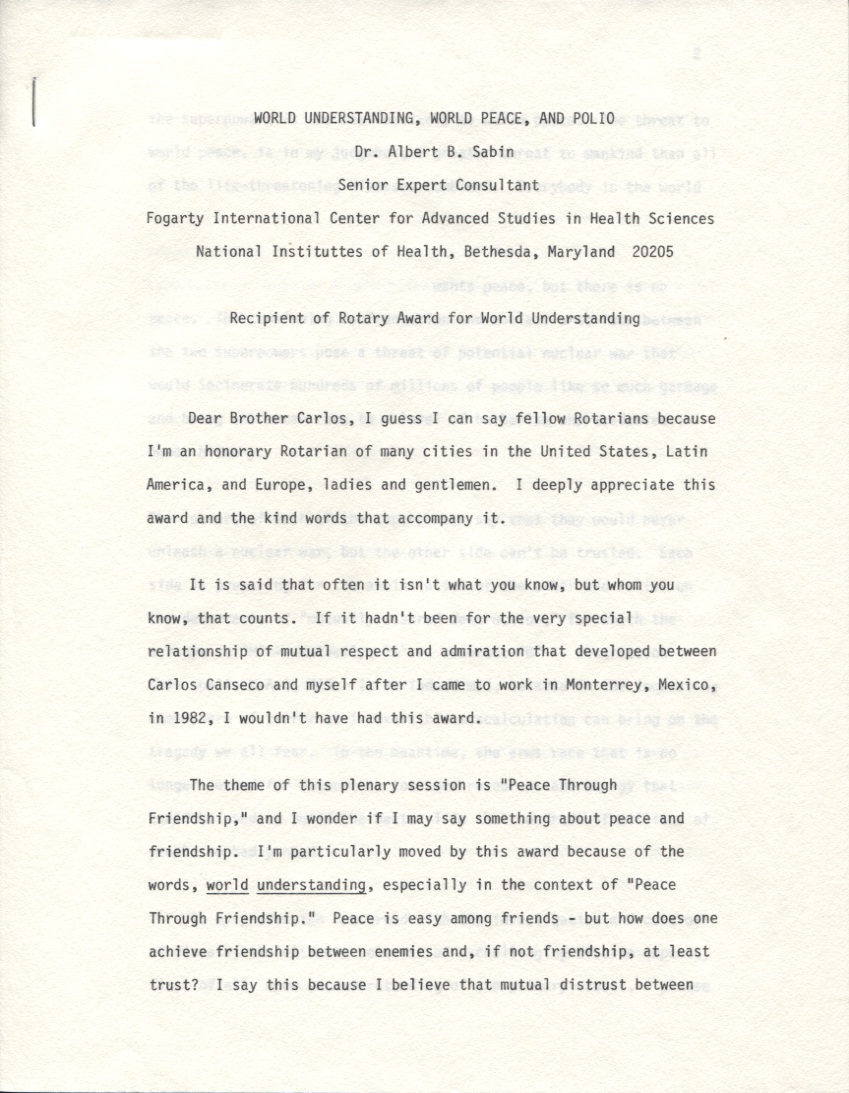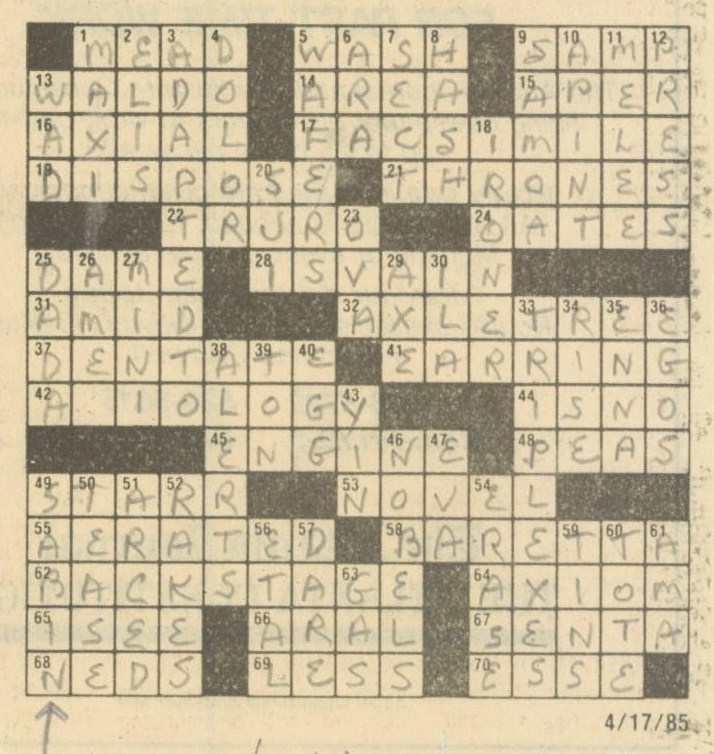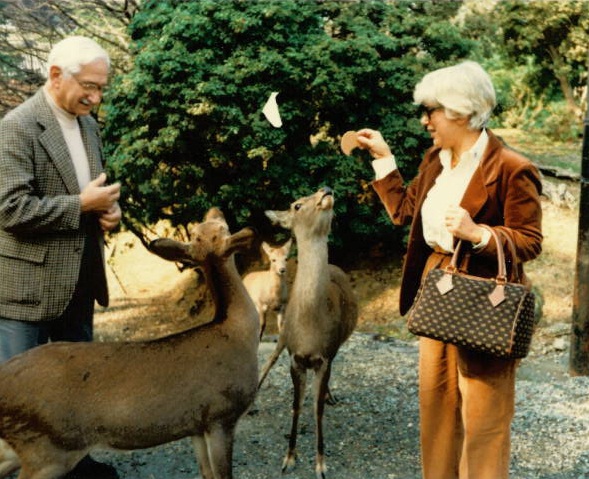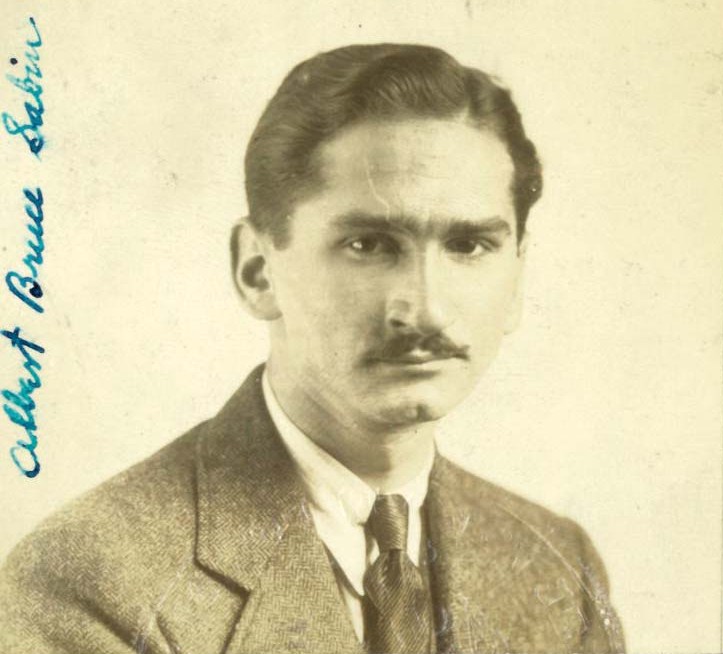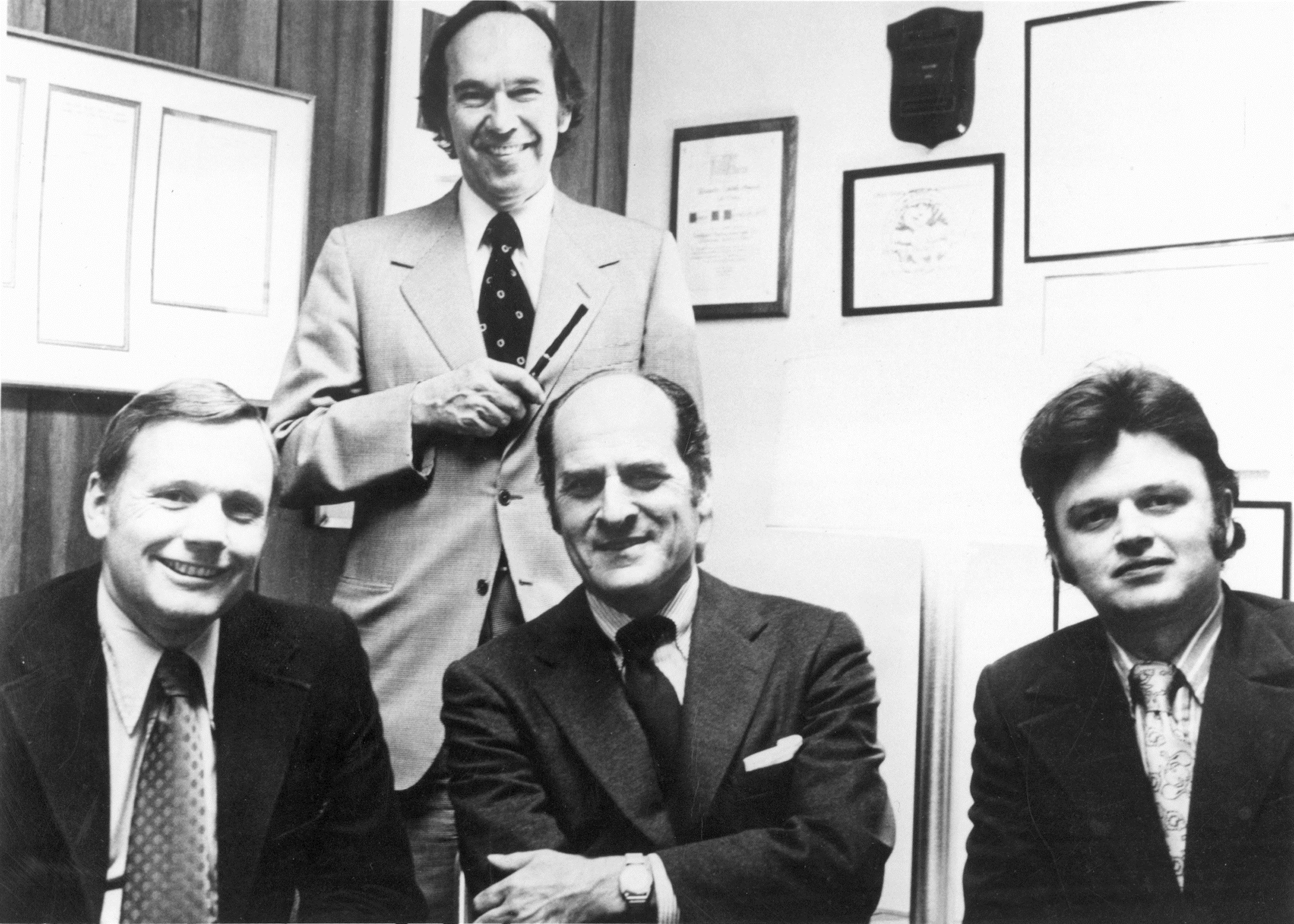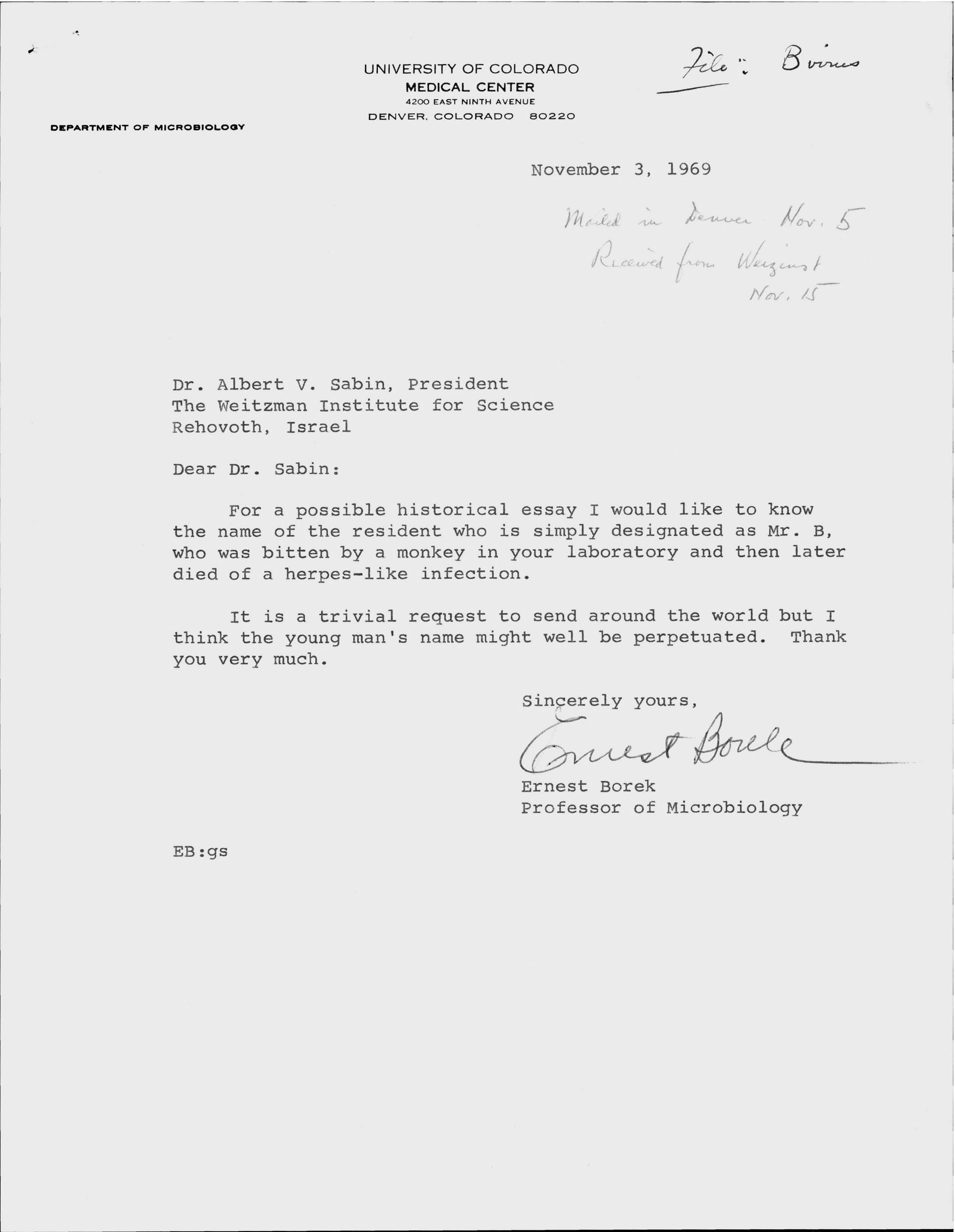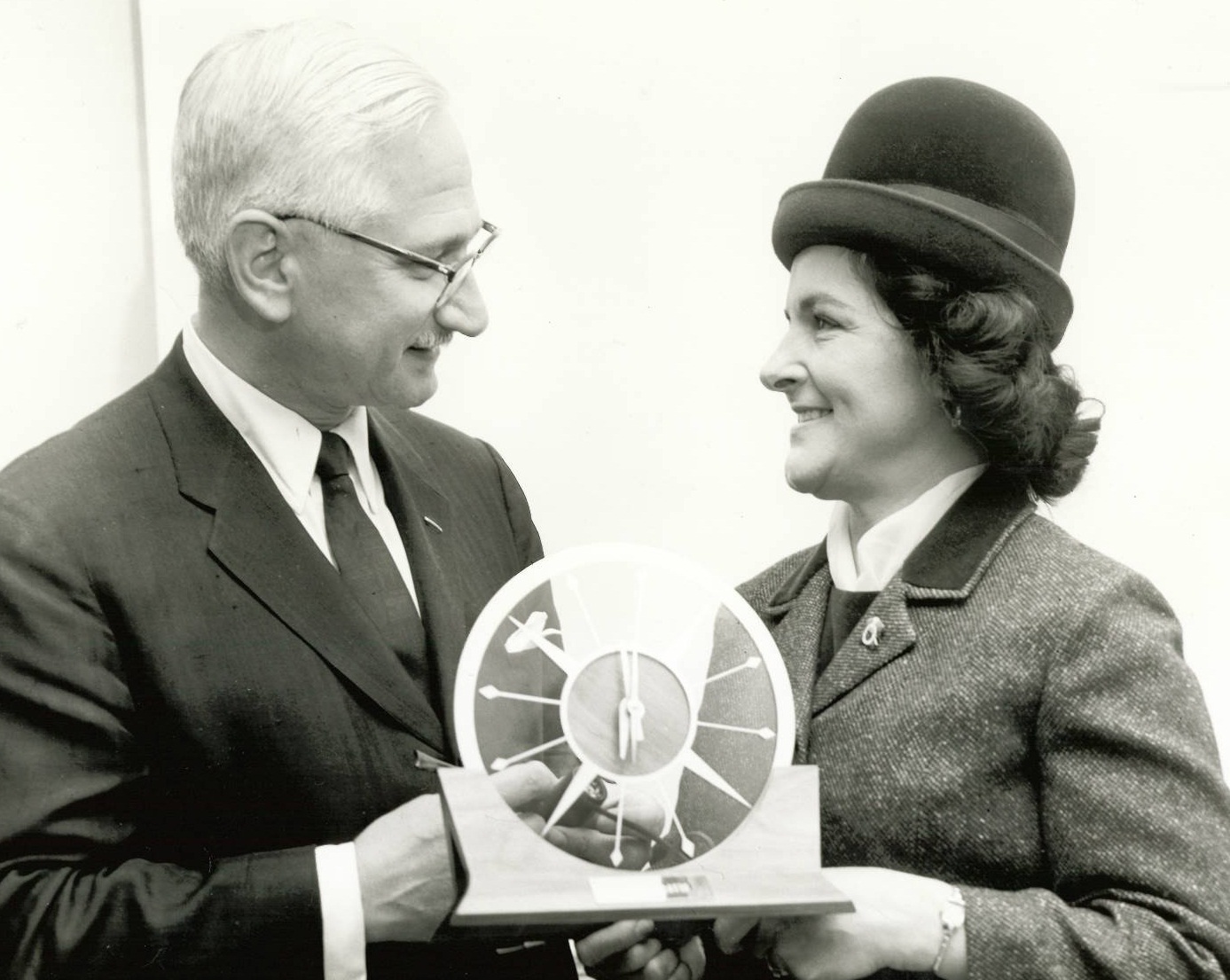We are currently in the process of redesigning the current Sabin website, which is very exciting! For this new website, I have been doing some research to create new content and update content already there. Through my search, I came across some essays about Dr. Sabin written by Dr. Allen B. Weisse, a cardiologist and medical historian.
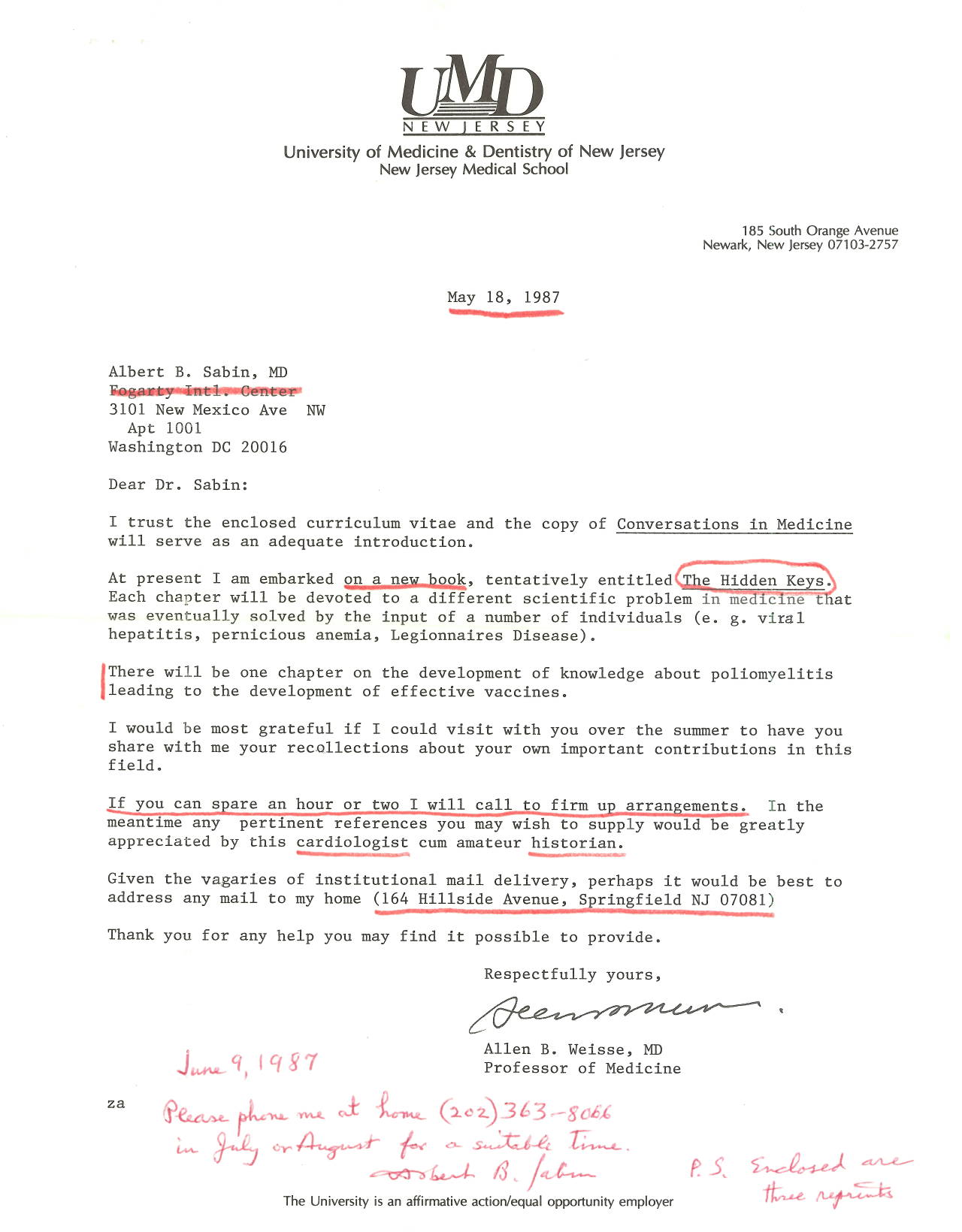
Letter from Allen B. Weisse to Dr. Sabin dated May 18, 1987. Dr. Sabin wrote a reply at the bottom of the letter.
In 1987, Dr. Weisse contacted Dr. Sabin about one of the essays that appeared in a book called Medical Odysseys: The Different and Sometimes Unexpected Pathways to Twentieth-Century Medical Discoveries. (The Sabin Archives has a folder of correspondence between Dr. Sabin and Dr. Weisse that discusses this chapter.[1]) They met later in 1987, when Dr. Weisse conducted an interview for this chapter.


